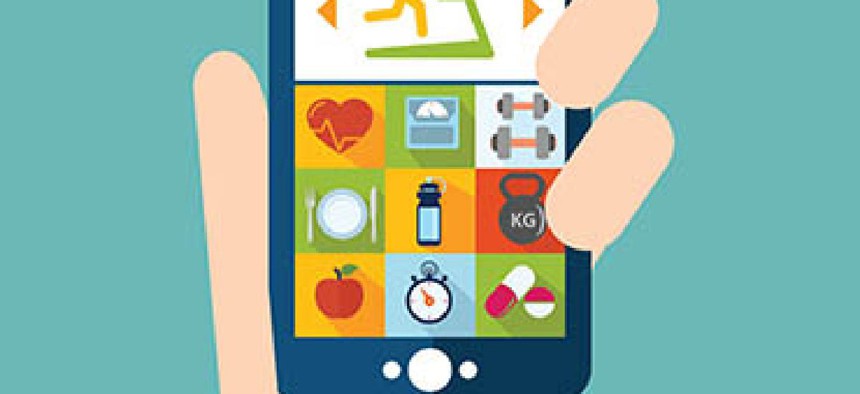In health apps, the game's the thing

Device-agnostic, gamified health apps will drive a new era of self-managed health care. If it isn't fun and well designed, it might not be worth pushing out at all.

(Graphicworld / Shutterstock)
There are three things people need to turn tech into better health outcomes, according to George Washington University professor and longtime Army health IT guru Dr. Alfred Hamilton: “Empowerment, convenience, control.”
While others talked security, Hamilton was one of several health experts who touted the need for device-agnostic, gamified health innovations at the July 31 Health Summit sponsored by AFCEA’s D.C. chapter.
Separate hardware and software
Defense Health Headquarters’ Col. Deydre Teyhen called for a separation of device and health tool.
Even as hardware keeps evolving, “We haven’t seen software evolving so that software can be device-agnostic,” she noted.
Device-agnostic software could better spread health-improving functionality by working with the devices people already own. One simple use case Teyhen proposed: a warning system so that people recovering from leg or knee injuries can be alerted when, even though they feel great, they’re starting to dangerously overexert themselves.
“The technology exists. We should be able to do that pretty easily,” Teyhen said. “There should be integrated software solutions that aren’t driven by one set of hardware.”
She also noted that low-bandwidth, non-cloud-connected operability is crucial, especially for military health tools.
But, of course, the best health app in the world might go ignored if it isn’t fun to use, she added.
More play, less work
The Internet of Things will usher in the age of “self-managed” health care, Hamilton said.
But health tool designers need to keep the user in mind, creating apps that deliver outcome feedback and enable social sharing to keep users on board, he added.
Health care may happen at the doctor’s office, but that’s only a tiny fraction of a human life. The day-to-day activities and choices people make, “that is where health happens,” Teyhen said. “Where we live, love and labor.”
She touted clinical successes showing that gamified, social-enabled approaches help deliver positive health outcomes – quitting smoking, for instance – and stressed that well-considered design is at the core of these successes.
Incentives and reminders
“Once you gamify it, once you put the best design and science behind it, you have great clinical outcomes,” she said, pointing to a University of Virginia project that uses games to teach small children how to get past chronic constipation.
There’s a “double-edged sword” danger with incentives, be they games or discounts at the gym, Teyhen noted. People respond initially to external motivators, “but if tech does not get to that lower level, the intrinsic motivation, research shows there’s a plateau.”
Thus, health professionals will need to continuously leverage software to better track and analyze human behavior to see what exactly people respond to and tweak health apps, she said.
Even the simplest of reminders, however, have been shown to have powerful impacts on behavior, she said, noting the efficacy of an app that reminded people with difficulty sleeping to not drink caffeine within six hours of bedtime.
“For the record, I will never download the ‘No Coffee’ app,” joked Mark Goodge, CTO at the Defense Health Agency.
He wholeheartedly agreed with the importance of gamification, comparing it with the distracting-from-pain, workout-lengthening, health-improving power of TVs in a gym.
“Why are we building [health] apps that don’t have that?” Goodge asked.





